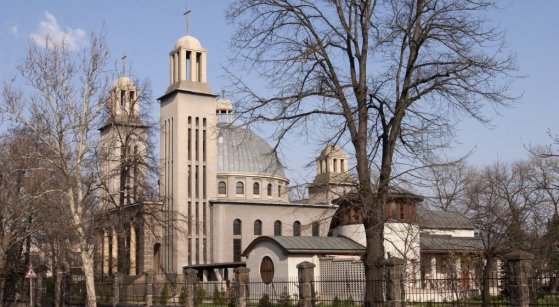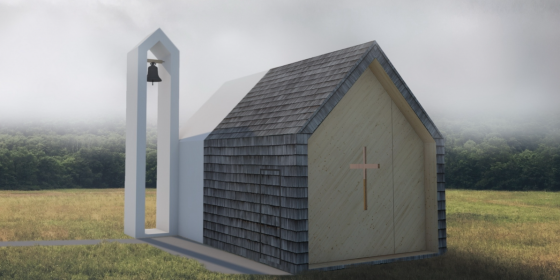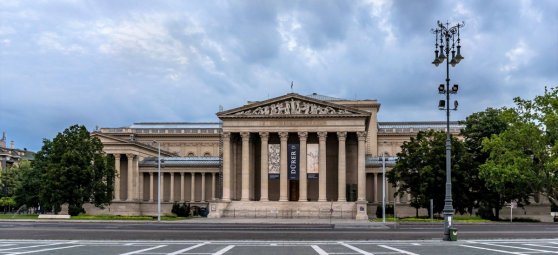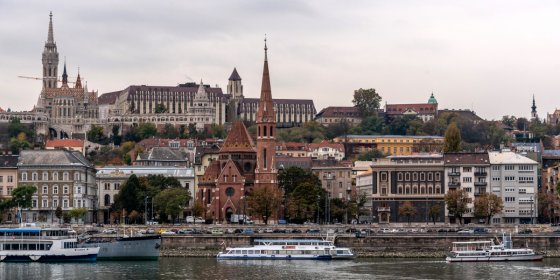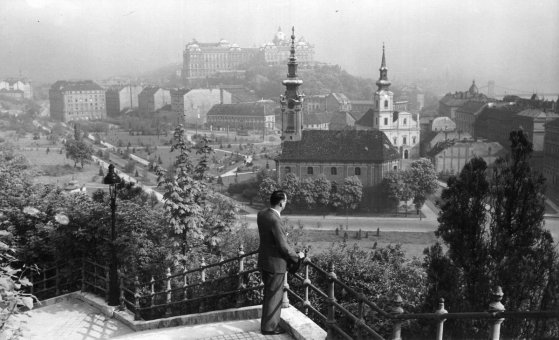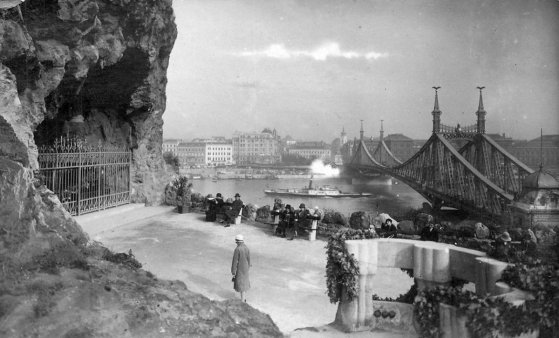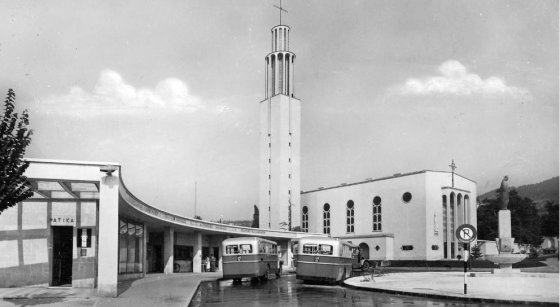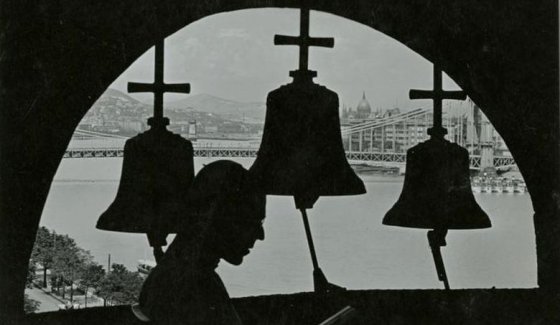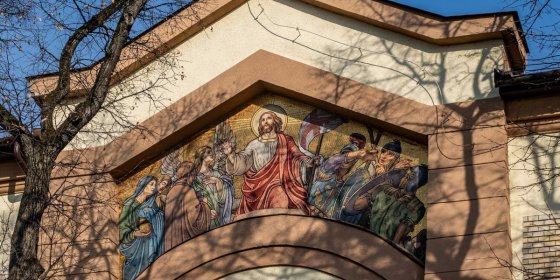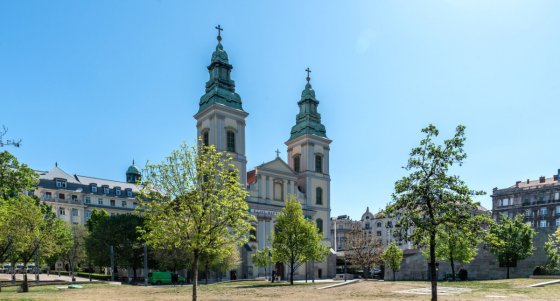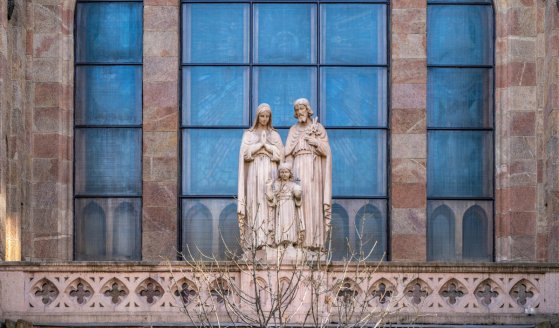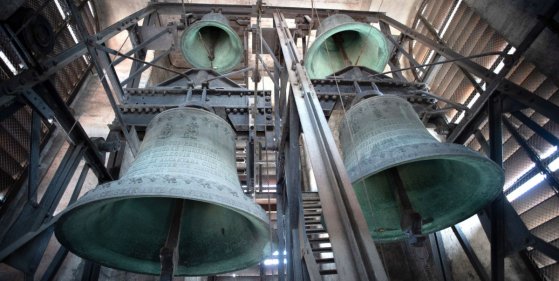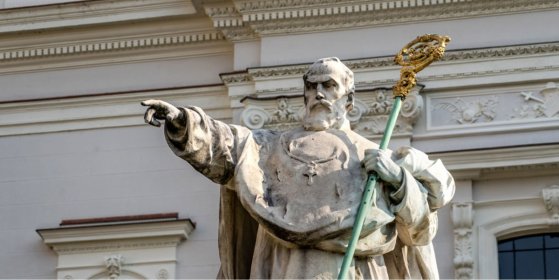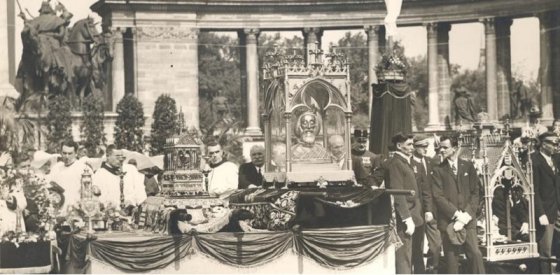 The „intertwined history” of the bridges and the city of Budapest
Which ideas and events have shaped the fate of bridges of Budapest and the cityscape? Alongside many other interesting facts, this question is also answered this newly published book by the Budapest City Archives, which introduces the history of bridges in Budapest.
The „intertwined history” of the bridges and the city of Budapest
Which ideas and events have shaped the fate of bridges of Budapest and the cityscape? Alongside many other interesting facts, this question is also answered this newly published book by the Budapest City Archives, which introduces the history of bridges in Budapest.
church
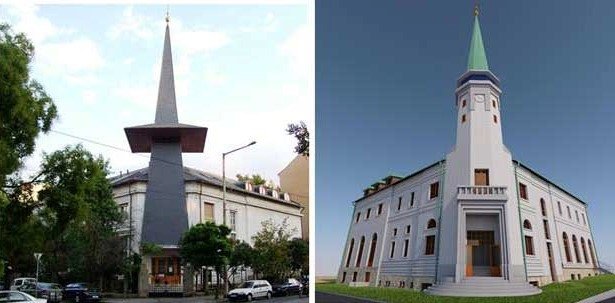 The Reformed church on Böszörményi ústreet was renovated and a new tower was built
The Reformed church on Böszörményi ústreet was renovated and a new tower was built
December 26, 2021 at 2:00 PM
A new tower was erected, the church square was enlarged, classrooms were built, and a modern scout home was created during the reconstruction of the Reformed church on Böszörményi street. The conversion was already very timely in the church, which originally served as a restaurant and was later only partially remodeled.
The Lutheran Great Church in Rákospalota is eighty years old
December 26, 2021 at 11:00 AM
The need to build a large Lutheran church arose in Rákospalota in 1936. The building, designed by György László and Jenő Szalkay, with modern elements, is eighty years old this year.
After eighty years, the chapel will be built on Anna-rét
December 5, 2021 at 2:00 PM
A small chapel of barely thirty square meters will be built on Anna-rét in the mountains. The final plans have been completed, so the mass memorial, which has been called for by the faithful for eighty years, can be built next year.
The Church of Arts - The building of the Museum of Fine Arts is 115 years old
December 5, 2021 at 11:00 AM
The Museum of Fine Arts is one of the most famous buildings in the country, without which the Heroes' Square is unimaginable. Yet this was erected the latest, it is ten years younger than the Kunsthalle opposite. However, its size and seriousness make this fact forgettable - and of course it is no longer young, it was opened to the public 115 years ago. In this context, Pestbuda presents its history and beautiful interiors, which house one of the richest art collections in Central Europe.
The pentagon of the Buda bank of the Danube - Pestbuda visited the completely renovated church of Szilágyi Dezső Square
October 21, 2021 at 10:30 AM
The Szilágyi Dezső Square Reformed Church was taken over by the faithful on Palm Sunday of 1896, so this year it celebrated the 125th anniversary of its construction. The Parish kept track of the anniversary and two years ago began the interior renovation of the building, which was largely completed in March. Due to the month of architecture - and as the Reformation Day approaches - Pestbuda was able to see what the new interior became like.
Only a belfry reminds Budapest of the Serbian Orthodox Church that once graced the Tabán
June 3, 2021 at 2:00 PM
Today, a belfry on Döbrentei Square is the only memory of the former Serbian Orthodox Church, which was consecrated on 3 June 1751, 270 years ago. The church dedicated to Demetrius of Thessaloniki was demolished in 1949 for political reasons.
A place of worship in a cave – Cave Church turns 90
May 24, 2021 at 2:00 PM
One might think that the Cave Church on the side of Gellért Hill is an old church, although it is surprisingly young, not a hundred years old, as construction of the chapel itself began in 1924 and it was consecrated in 1931. During the communist era, a reinforced concrete wall closed it off from worshippers, which was only demolished in 1992.
Renewal in Pasarét: renovation of the Franciscan church and the new parish building to be completed in the autumn
April 27, 2021 at 9:30 AM
The life of one of the first modern churches in Budapest may soon be given new impetus: the investment on Pasaréti Square, next to the church designed by Gyula Rimanóczy and completed in 1934, has begun. The project will renew the parish building, create an up-to-date library and community centre that follows the style of the modern church. Due to the works, the 2nd District church will be closed in July-August, the reconstruction is expected to be completed by Autumn.
Popes in Budapest – Several leaders of the Catholic Church visited the Hungarian capital before being elected
April 8, 2021 at 10:00 AM
The recent announcement that Pope Francis would visit Budapest in the autumn of 2021 for the closing Mass of the International Eucharistic Congress came as a true surprise to many. The last time a similar event took place was exactly thirty years ago, in 1991, when Pope John Paul II visited the Hungarian capital. Four other leaders of the Catholic Church came to Budapest, even before they were elected the Bishop of Rome. But what have former popes seen of our capital? In 1891 Pope Pius XI saw a tram for the first time in Budapest in 1891. John XXIII visited in 1930 for the St. Emeric Memorial Year, while Pius XII and John Paul VI attended the 1938 Eucharistic Congress. Although none of them visited as popes, it meant a lot to them and the Hungarians that they visited Budapest.
Depictions of Christ portray the events of the Holy Week around Budapest
April 4, 2021 at 9:30 AM
Depictions of Jesus can be found in every district of Budapest of one walks with their eyes open. Most often, crosses erected near Catholic churches or by public roads are reminders of Christ’s crucifixion, but several Calvaries, statues, and building mosaics also depict Easter-related events: the story of the Passion and the resurrection of the Messiah. This virtual walk will present a selection of the most valuable works of art that give hope at Easter in 2021.
Church Renovation programme to begin
April 2, 2021 at 2:30 PM
Before easter, the government announced a major church renovation programme: 25.7 billion HUF was reallocated to renovate the churches.
Churches of the Holy Family call the faithful in both Buda and Pest
January 13, 2021 at 1:00 PM
On 27 December last year, Pope Francis announced in Rome that the Catholic Church will celebrate a special year dedicated to family love, beginning on 19 March 2021. Discussions about the concept of a family have recently brought the issue to the front of public debates, making the Year "Amoris Laetitia Family" a particularly well-timed initiative in the country. Currently, three churches in Budapest are dedicated to the Holy Family, reminding the faithful that family appeared as a fundamental value and a natural element of human existence at the beginning of Christianity. In preparation for the year of the family, Pestbuda visited the Churches of the Holy Family in Zugliget and Terézváros.
Master bell founder Laszlo Szlezák born 150 years ago
October 6, 2020 at 3:00 PM
László Szlezák is possibly one of the best-known Hungarian bell-founders. He came to Budapest at the age of 14 and cast beautiful bells for churches throughout the city. Several of them can still be seen, for example in the Reformed Churches in Angyalföld and on Városligeti Avenue, on Ferenciek Square, in the Catholic Church on Haller Street, and the Kőbánya Church designed by Ödön Lechner. His largest and most famous work, the 7945 kg Saint Emeric bell cast for Saint Stephen's Basilica was destroyed in the Second World War.
Péter Pázmány never visited Budapest – Born 450 years ago the prelate remains a symbol of Hungarian unity
October 4, 2020 at 9:00 AM
When in 1635 Péter Pázmány founded the first University in Hungary – the successor of which operates in Budapest today – Buda and Pest were occupied by the Ottomans. Thus, one of the greatest figures of Hungarian baroque literature, and a leading figure of Hungarian Catholicism, never visited what is today Budapest. Nevertheless, two universities in the capital vie to preserve his memory. Several statues and other works of art depict him around the city, emphasising how the life's work of this Hungarian prelate is unavoidable in public life, education, culture and religion.
A holiday missed – The colourful history of Processions of the Holy Right
August 20, 2020 at 2:00 PM
The Procession of the Holy Right, held on 20 August, is the most important religious event in Hungary, and St. Stephen's Day is the most important holiday for all Hungarians. Sadly, this year they will be no fireworks or processions. In an emergency, it is worth looking back into the past, as many interesting and informative events have taken place during the long and tumultuous history of the Holy Right and its processions. The relic arrived in Buda in 1771 courtesy of Maria Theresa, and the first procession took place in 1818 in Buda Castle. In the 19th century, however, the holiday increasingly moved to the Pest side and was already accompanied by national interest.
More articles
 The „intertwined history” of the bridges and the city of Budapest
Which ideas and events have shaped the fate of bridges of Budapest and the cityscape? Alongside many other interesting facts, this question is also answered this newly published book by the Budapest City Archives, which introduces the history of bridges in Budapest.
The „intertwined history” of the bridges and the city of Budapest
Which ideas and events have shaped the fate of bridges of Budapest and the cityscape? Alongside many other interesting facts, this question is also answered this newly published book by the Budapest City Archives, which introduces the history of bridges in Budapest.
 The Bridge Report, which brought a turning point in the history of Budapest
A travel report that changed the history of Pest and Buda, as well as Hungary. The little book contributed to the change of half a thousand years of legal customs and the implementation of an investment of unprecedented size and technical quality. This book was The Bridge Report [Hídjelentés in Hungarian].
The Bridge Report, which brought a turning point in the history of Budapest
A travel report that changed the history of Pest and Buda, as well as Hungary. The little book contributed to the change of half a thousand years of legal customs and the implementation of an investment of unprecedented size and technical quality. This book was The Bridge Report [Hídjelentés in Hungarian].
 Drama on the university wall - The heroic monument was planned 95 years ago
In the constant hustle and bustle of the Egyetem Square in Pest, the students may not even notice the monument that decorates the short section of wall between the church and the central building of ELTE. However, it commemorates their predecessors, the heroes who fought for their country in World War I, and those who heroically helped them. The first design of the dramatically collapsing soldier was born in 1928, ninety-five years ago.
Drama on the university wall - The heroic monument was planned 95 years ago
In the constant hustle and bustle of the Egyetem Square in Pest, the students may not even notice the monument that decorates the short section of wall between the church and the central building of ELTE. However, it commemorates their predecessors, the heroes who fought for their country in World War I, and those who heroically helped them. The first design of the dramatically collapsing soldier was born in 1928, ninety-five years ago.

